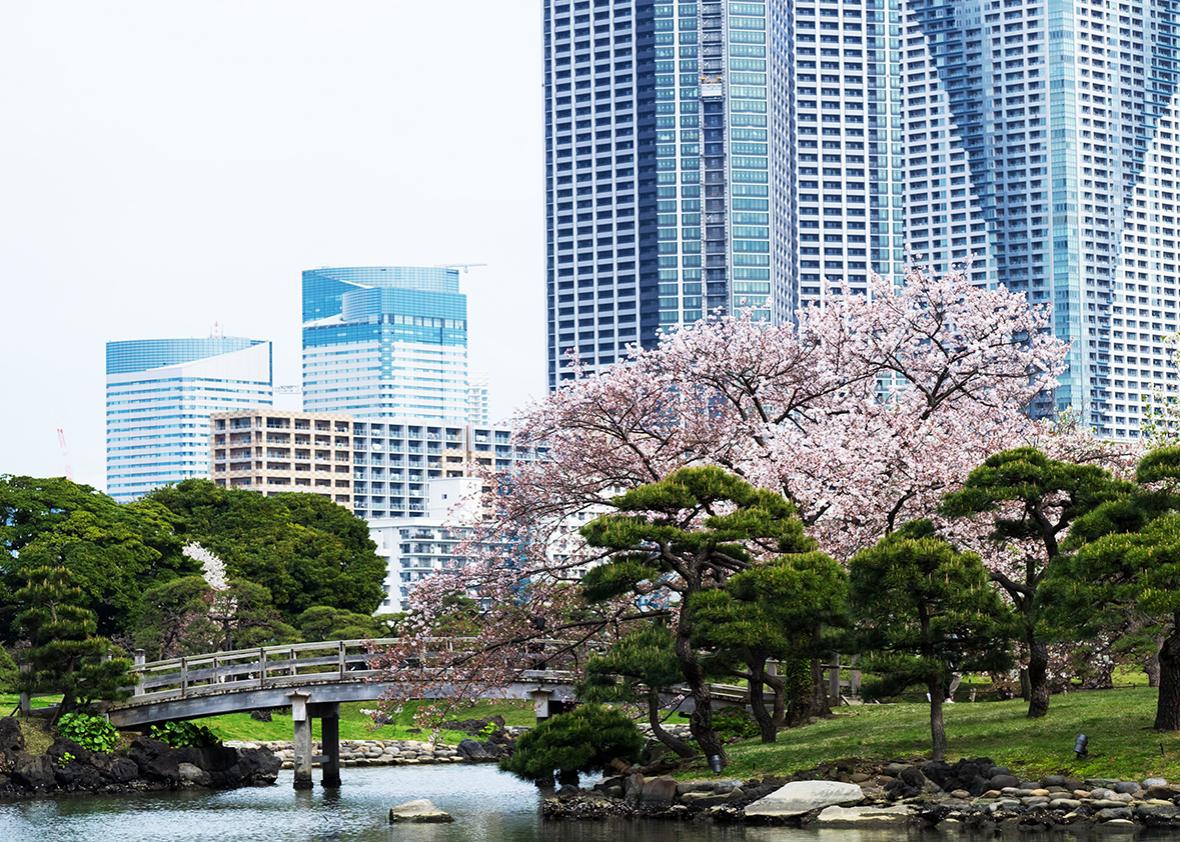Spring is arriving earlier in cities, and the problem may be more than just global warming. Environmental scientists realized that the first signs of spring have been slowly creeping backward in recent years, more so in urban areas, and might come a full month early by 2100.
So why is this effect more dramatic in metropolitan centers? A recent study proposed a culprit: light pollution, a key difference between a city center and the surrounding area. To test if this could cause early blooms, researchers exposed plants to long periods of street light–like artificial light and found that, as predicted, exposed plants started blooming earlier than those that grew in normal light.
Unsurprisingly, plants are constantly assessing the available daylight to understand if it’s time for them to bloom. When the days become long enough, they know to start making leaves. But city lights make it harder for plants to assess when spring has actually sprung. Heavy exposure seems to trick plants into thinking it’s later in the year and that conditions are better than they actually are.
Some plants, especially those that bloom very early in the season, also incorporate average temperature into their calculus of deciding when to emerge from winter dormancy. The beech tree, for example, is particularly susceptible to frost and therefore will wait to emerge until the temperature is right, too. (Sometimes they are fooled by an unusually warm late winter and bloom too early.) But in cities, even plants that check the temperature could be fooled thanks to the Urban Heat Island effect, in which cities are typically between 2 and 5 degrees warmer than surrounding areas.
Whatever the reason, or combination of reasons, when plants bloom earlier than usual, it can spell disaster for ecological systems—in which timing is key. Take for example, the relationship between oak trees and winter moths. When the moths hatch each spring, the larvae feed on the oak leaves. If they hatch too early, there’s no food. If they hatch too late, the mature leaves are too hard for the larvae to eat. Then, if the larvae die, the things that feed on moths die, like bats. Fewer bats mean mosquitoes can thrive, having lost one of their major predators. More mosquitoes can mean more vectors for disease and more chances of human exposure. The dominos just keep falling.
Unlike climate change, however, light pollution is a problem with readily apparent solutions. One report from Italy suggests using fixtures that cast light downward instead of upward and outward, or switching to high-efficiency bulbs that emit narrower wavelengths of light, which researchers have found don’t affect plants quite so strongly.
More than 85 percent of Europe’s landmass is affected by light pollution, but these suggestions have been met with a less-than-enthusiastic response so far. Besides one piece of landmark legislation in Slovenia in 2007 (which was quickly walked back when FIFA threatened to remove accreditation of the football stadium in the capital due to poor lighting), light pollution laws are framed as guidelines or are restricted to areas around observatories. The situation for fighting light pollution here in the U.S. doesn’t look much better: Just 18 states have adopted light pollution legislation of any sort, and many laws are simply guidelines for local governments.
It turns out even when there are simple solutions, we’re still not great at fixing ecological problems.
